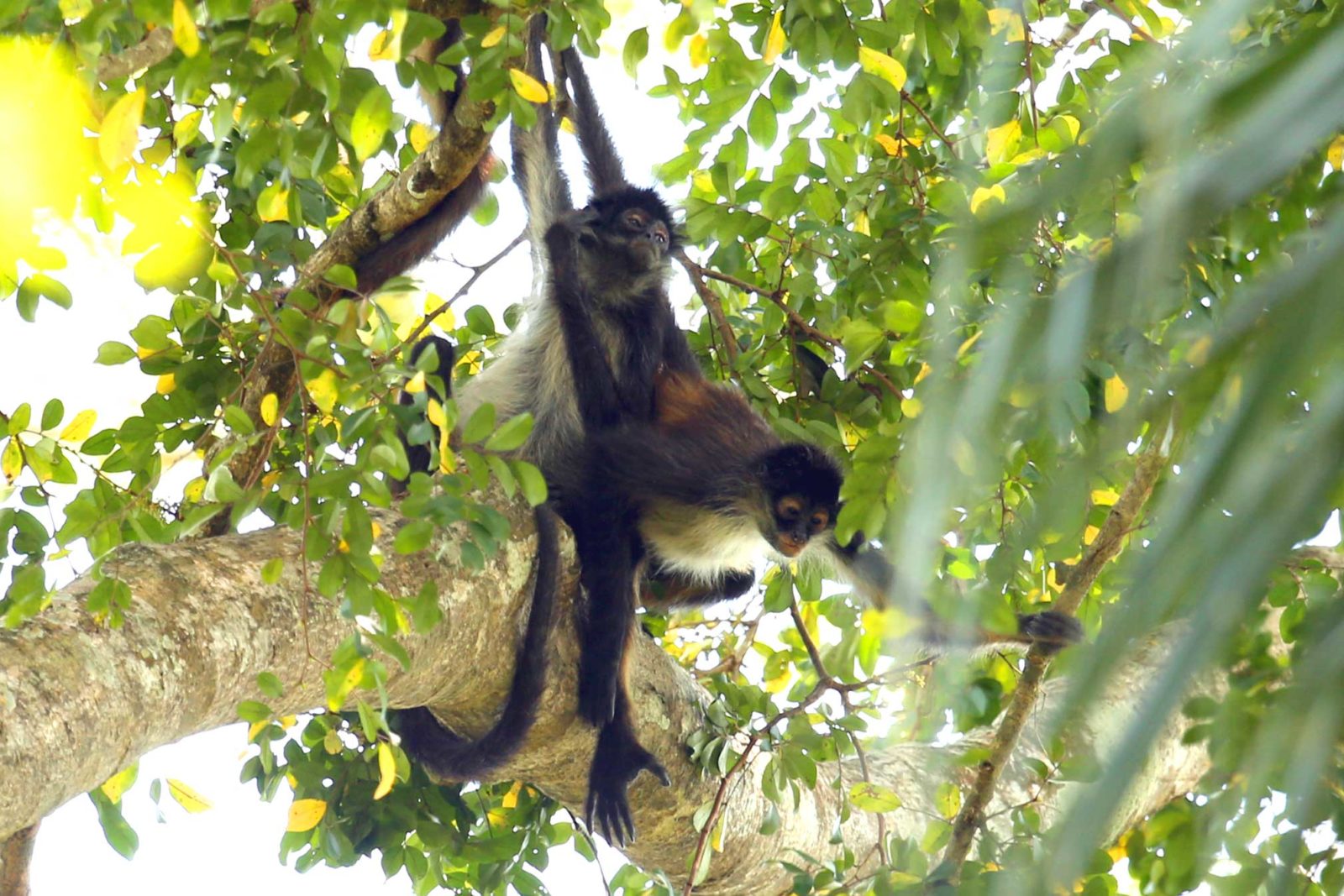
Northern Guatemala
Las Guacamayas Biological Research Station
Las Guacamayas Biological Research Station (as the name implies) was first set up for scientific purposes and now has a small lodge to accommodate a few lucky visitors. The property, the only true wildlife lodge in Guatemala, serves as an essential facility for the conservation of the natural resources and cultural heritage of the southeastern section of the Laguna Del Tigre National Park, located in El Petén.
The station is relatively isolated, providing a relaxing means to enjoy the natural beauty of the reserve. Watching the sunset over the Rio San Pedro river from the high viewpoint is an experience you’ll never forget.
The nature walks provide a good opportunity to explore the rainforest, ably assisted by local naturalist guides. Ask to be taken to the high viewpoint at night to see if the owls will make an appearance, or seek out the scarlet macaw nests. If you’re not able to walk a lot there are other lighter activities such as boat tours along the river.
The meals are included during your stay and are simple but delicious, using mainly fresh local ingredients.
Access to Las Guacamayas is via a dirt road heading northwest from Flores to the village of Paso Caballos (about a two-hour drive). From there, it’s a 20-minute motorboat ride to the biological station, located on a hillside in a loop of the river.
Facilities
There are two categories of rooms: the two Waterfront Rooms are the most luxurious ones, large and well appointed with quirky animal carvings, custom-made furniture, private river-view decks, en-suite bathrooms and air conditioning. The four standard rooms come with private bathrooms, fans and hot water. There is a small plunge-size pool for general use, a laboratory, kitchen, dining room, conference hall and museum available for all guests to use. The electricity is only on in the evening, beginning at 5:00 pm.
Local Wildlife
The landscape consists of tropical rainforest in which there are species like the guacamaya, or scarlet macaw (Ara macao cyanoptera), jaguar (Pantera onca), Tapirs (Tapirus bairdii), as well as a great variety of resident and migratory birds, reptiles and amphibians.
These are also mixed wetlands in the upper basin of the San Pedro Martir river which play a fundamental role in the regulation the hydro-biological cycle, crucial to maintaining the reserves of the country's largest source of freshwater. In the evening, you can go out on the river in search of crocodiles with the station’s staff.
Bird-watching is available in the mornings. There are observation platforms inside the site where the scarlet macaw project operates. The staff offer photo safaris whereby you can watch and photograph macaws from a platform. The best time to visit for a glimpse at nesting macaws is during February and March, though the macaws can usually be seen between November and April.

Alan Godwin
Area Specialist
There are plenty of mosquitos here so it’s worth bringing a lot of repellent with you.
If you have any questions regarding our Guatemala tours, please feel free to contact me on +44 (0)1803 866965

















